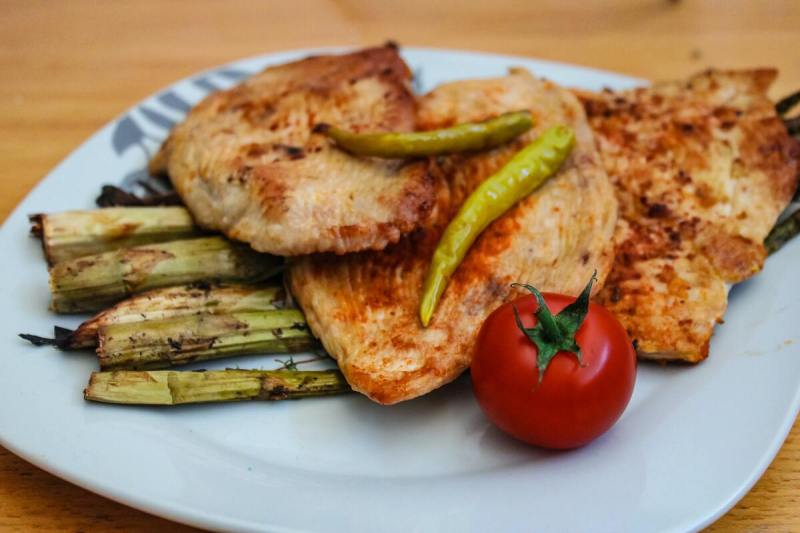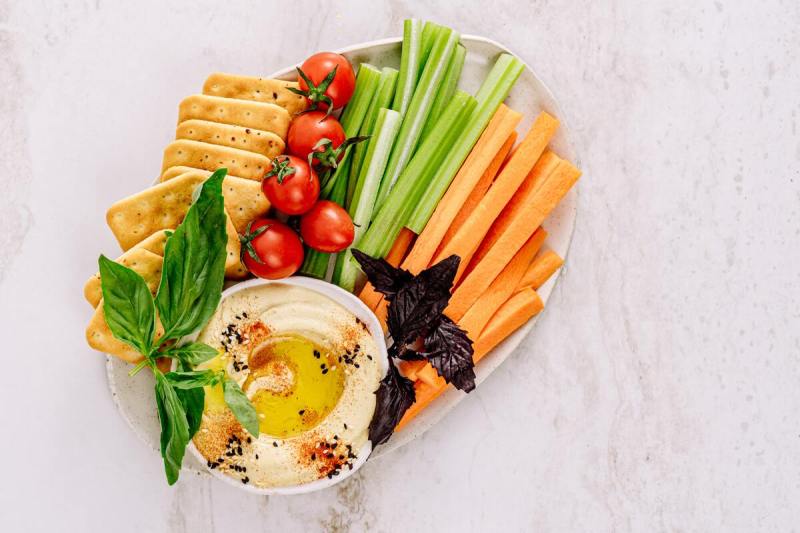Are you looking to lose weight and become a healthier version of yourself? With so many diets and supplements claiming they are the ones that will finally help you shed those extra pounds, it can be hard to know which to choose. However, the South Beach diet has been considered a safer and more realistic option that may work for you.
Many people have found the South Beach diet to be a good weight loss and healthy eating strategy. It was initially created to help with heart health, but it can have other benefits as well. Keep reading to learn how to follow the South Beach diet and see if it would fit into your weight loss plan.
What is the South Beach diet?

The South Beach diet is categorized as a low-carbohydrate, high-protein diet. It is based on the principle of consuming low amounts of carbohydrates and fatty meals while eating lean proteins and other nutrient-rich foods. This diet’s main focus is choosing healthier, unprocessed options over refined sugars and unhealthy fats.
This low carb low sugar diet is divided into three phases, each with specific dietary aims and requirements:
- Phase One: This preliminary phase is the most strict and lasts about two weeks. In this phase, you must cut out most carbohydrates, including sugars, certain grains, fruits, and vegetables. The aim is to regulate blood sugar levels, reduce cravings for sugary and starchy foods, and kickstart weight loss. Here, you are encouraged to consume lean proteins, such as chicken, turkey, fish, and shellfish, as well as healthy fats from sources like avocados, nuts, seeds, olive oil, etc.
- Phase Two: This is a less restrictive phase compared to phase one. You can gradually reintroduce some healthy carbohydrates into your diet during this phase. This includes whole grains, certain fruits, and vegetables. The goal of Phase Two is to continue weight loss at a more moderate pace while maintaining healthy blood sugar levels.
- Phase Three: The final phase is also called the maintenance phase. It has no set duration and can last as long as you desire. By this stage, you have achieved your weight loss goals and have developed healthier eating habits. Phase Three emphasizes a balanced and sustainable eating approach, focusing on whole, nutrient-dense foods. It encourages you to choose nutrient-rich food and continue practicing the principles learned during phases one and two.
One vital feature of the South Beach diet to note is that it does not involve calorie counting. This makes it a more straightforward approach for people to follow. It promotes mindful eating and the consumption of balanced and wholesome meals. However, it is still advised to practice portion control to avoid a calorie surplus.
What are the benefits of the South Beach diet?

Weight loss and improved body composition
Sticking to the South Beach diet can help you lose weight and keep your overall body healthy. In a clinical trial, researchers found that the South Beach diet caused significant weight loss and improved overall body composition compared to a control group.
Improved cardiovascular health
The American Heart Association (AHA) has recognized the South Beach diet as effective in improving cardiovascular health due to its focus on healthy fats and lean proteins. By reducing the consumption of refined carbohydrates and saturated fats, the diet may help lower low-density lipoprotein cholesterol levels and decrease the risk of cardiovascular diseases.
Reduction in blood triglyceride levels
Consuming healthy fats, such as those found in nuts, avocados, and olive oil, has been shown to lower triglyceride levels. A study published in the Journal of Paediatrics reported that a low-carb, low-sugar diet similar to the South Beach diet resulted in weight loss without harm to the lipid level.
Improved insulin sensitivity and blood sugar control
A study published in the Annals of Internal Medicine showed that low-carb, high-protein meals improved insulin sensitivity and better blood sugar control, making the South Beach diet beneficial for individuals with insulin resistance or type 2 diabetes.
What can you eat on this diet?

As mentioned earlier, the diet is divided into three phases, each with specific guidelines on what to eat. Here is an overview of the types of foods permitted in each phase.
Phase One
During Phase One, the most restrictive phase, the following foods are typically allowed:
- Lean proteins: Chicken, turkey, fish, shellfish, lean cuts of beef, pork, tofu, and legumes (beans, lentils) are all permitted.
- Healthy fats: Avocados, nuts (e.g., almonds, walnuts), seeds (e.g., chia seeds, flaxseeds), and olive oil are encouraged.
- Non-starchy vegetables: Leafy greens (e.g., spinach, kale), broccoli, cauliflower, peppers, tomatoes, cucumbers, and other low-carb vegetables are allowed.
- Dairy: Low-fat or fat-free dairy products such as Greek yogurt, cottage cheese, and milk are acceptable in moderation.
- Sugar substitutes: Artificial sweeteners like stevia or sucralose may be used sparingly.
Phase Two
Phase Two allows for a gradual reintroduction of certain healthy carbohydrates. The following foods are added to the Phase One list:
- Fruits: Berries (e.g., strawberries, blueberries, raspberries), apples, oranges, and other low-sugar fruits are included.
- Whole grains: Whole-grain bread, brown rice, quinoa, whole-grain pasta, and oatmeal can be introduced in limited amounts.
- More vegetables: Some starchy vegetables like sweet potatoes and corn are allowed in addition to non-starchy vegetables.
Phase Three
In Phase Three, the following are encouraged:
- Continue with the foods allowed in Phase One and Phase Two.
- Sustain a well-balanced diet that constitutes a blend of nutrient-rich foods.
- Practice portion control and mindful eating.
Adequate hydration is vital for all stages of the South Beach diet, and this can be accomplished by making sure you’re consuming enough water. Additionally, you can enjoy herbal teas and other non-caloric beverages to help keep you hydrated.
What foods are restricted on this diet?

Certain foods are generally restricted in all phases of the South Beach diet. These include the following:
- Refined sugars: Sugary treats, candies, desserts, and sugary beverages should be avoided.
- Refined carbohydrates: White bread, white rice, pasta, and other highly processed carbohydrates should be minimized.
- Unhealthy fats: Trans fats and partially hydrogenated oils in processed foods and some margarines are discouraged.
- High-carb fruits and vegetables: During Phase One, high-sugar fruits and starchy vegetables are restricted.
- Sugary beverages: Soda, fruit juices, and other sugary drinks should be avoided.
It is important to note that individual preferences, dietary needs, and health conditions may influence the foods someone chooses to include or avoid on the South Beach diet journey. Consulting with a healthcare professional or a registered dietitian can help you personalize the diet plan to meet individual requirements and goals best.
Are there any possible adverse effects?

Ketosis and related symptoms
During Phase One, you may experience ketosis, a metabolic state in which the body burns fat for fuel. This increases the level of ketone bodies in the body. While ketosis is a natural process, it may lead to side effects like bad breath, fatigue, and dizziness.
Risk of dehydration
Diets focusing on protein consumption may increase the risk of dehydration due to the body’s increased need for water to metabolize protein and excrete the resulting nitrogenous waste. This is why adequate hydration is critical in the South Beach diet.
Risk of constipation
A South Beach diet plan with no carbs or little dietary fiber increases the risk of constipation. Dietary fiber is good for gut health and helps to ease digestion.
Example meal plan

Here is an example of what the best low-carb diet might look like:
Breakfast:
- Scrambled eggs with spinach and diced tomatoes cooked in olive oil
- A side of sliced avocado and a small serving of berries
Lunch:
- Grilled chicken salad with mixed greens, cucumber, bell peppers, and feta cheese dressed with olive oil and lemon juice
- A handful of nuts (e.g., almonds, walnuts) for added healthy fats
Snack:
- Greek yogurt with a sprinkle of cinnamon and a few sliced strawberries
Dinner:
- Baked salmon seasoned with herbs and served with steamed broccoli and cauliflower
- A side of quinoa or brown rice (moderate portion)
Frequently asked questions

How should you exercise when following the South Beach diet?
While there are no specific exercise requirements that accompany this diet, it is recommended that you exercise regularly to see the best results. The CDC states that adults need to do a minimum of 150 minutes of moderate-intensity cardio, like walking and biking, as well as two days of strength training. This could be a great goal to hit in addition to meeting the South Beach diet guidelines.
Is peanut butter allowed on the South Beach diet?
Yes, you can enjoy peanut butter on the South Beach diet. In phase one, nuts and oils are permitted, so this would include peanut butter. Throughout the other phases, there is no mention of needing to take these foods away, so you can have peanut butter and other nut butters.




